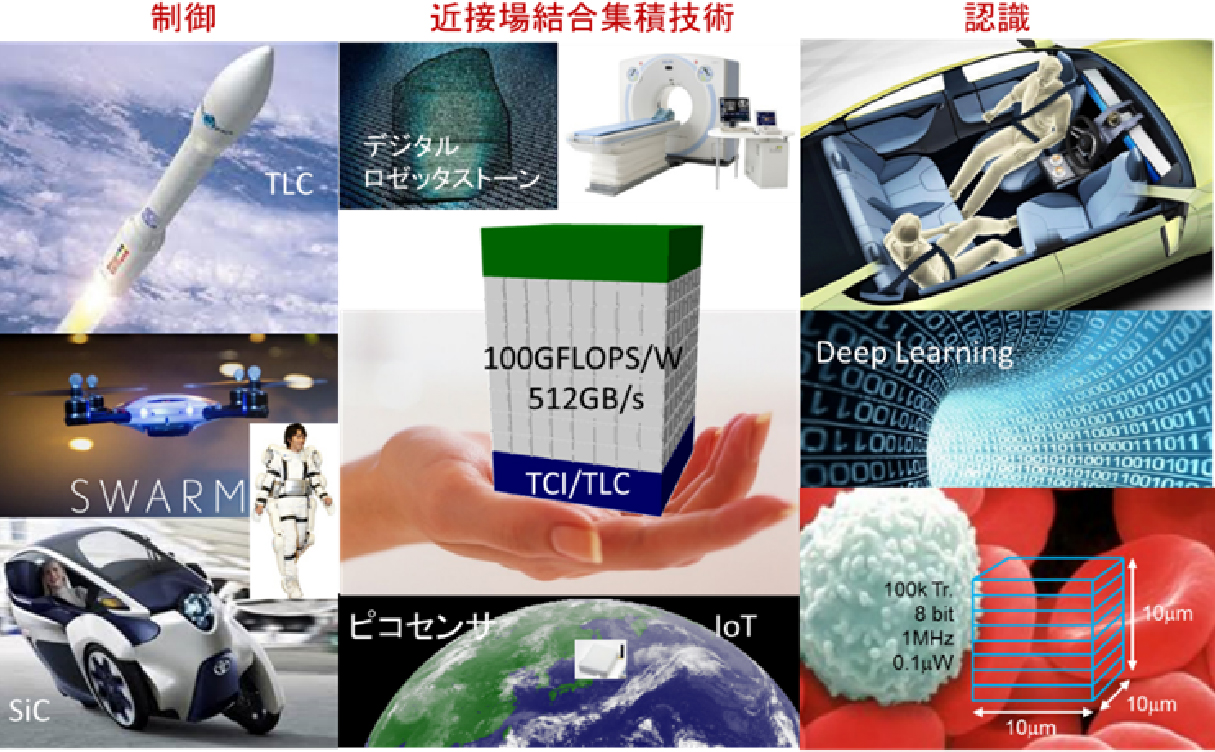Our Vision

The Slowing of Moore's Law
Today integrated circuits (IC) can be fabricated to connect tens of billions of circuit elements with interconnects totaling several kilometers in length. However, with the slowing of Moore's Law which has been driving the advancement of the IC industry, we can no longer rely solely on integrating increasingly more functions onto a single chip through scaling for performance improvement. As a result, we need to find a revolutionary approach to solving the problem of connecting chips together
3D Integration Using Near-Field Coupling Technology
Our proposal is to replace mechanical connections using wires, solder joints and connectors with electromagnetic connections using near-field coupling to connect chips and modules together. We have developed the ThruChip Interface (TCI) technology, which is a wireless chip interconnect technology based on magnetic coupling,. TCI enables 3D stacking and integration of system LSI and memory chips. In addition, we have developed the Transmission Line Coupler (TLC) contactless interconnect technology based on electromagnetic coupling, which allows us to connect modules including storage and sensor modules together like LEGO blocks. The goal of our current research is to realize by 2017 a stacked DRAM interface at 512GB/s, which is 32 times the data rate achieved in 2015, and use it to implement by 2019 a 100GFLOPS/W computer which is ten times more power efficient than what is achievable today..
A Future Created with IC-X
By 2025 we will be able to build chips integrating more circuit elements than the number of cells in a human body. This will drive advancement and transformation in society far beyond our imagination. In addition to tackling technical challenges, it is therefore also important to consider what kind of a future we want to build. We dream of a future society created with the fusion of IC and various other academic and technological disciplines, or what we call IC-X, where X can be information science, life science, nanotechnology, etc.. For example, we are investigating what Internet of Things can be realized using sensor nodes in the form factor of a 1cm3 module, as well as how advanced systems like self-driving cars and health monitoring systems can be created using advanced technologies including deep learning and SiC.
- [1] ICの物語(『パリティ』・丸善2015) 本文を読む
- [2] JST ACCELプロジェクト ACCEL SITE




